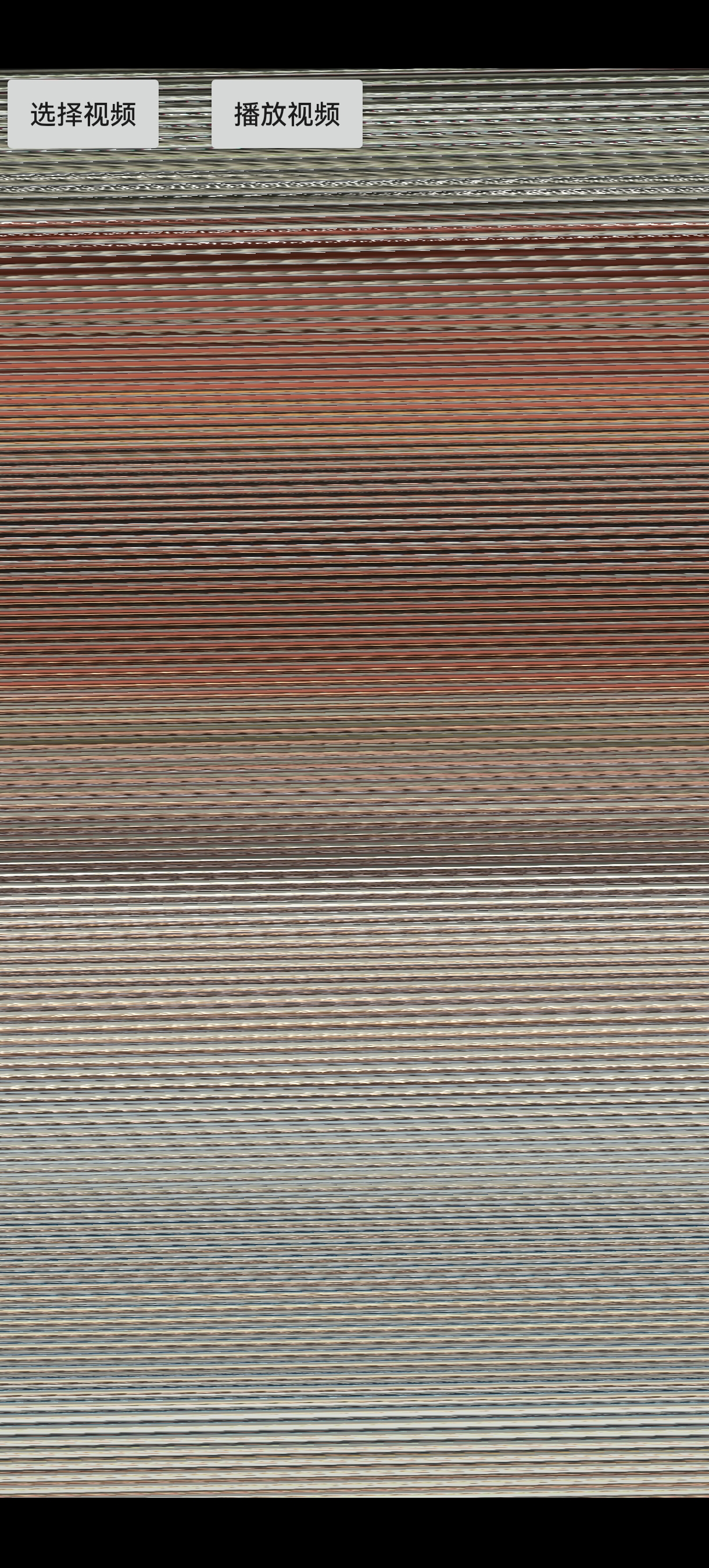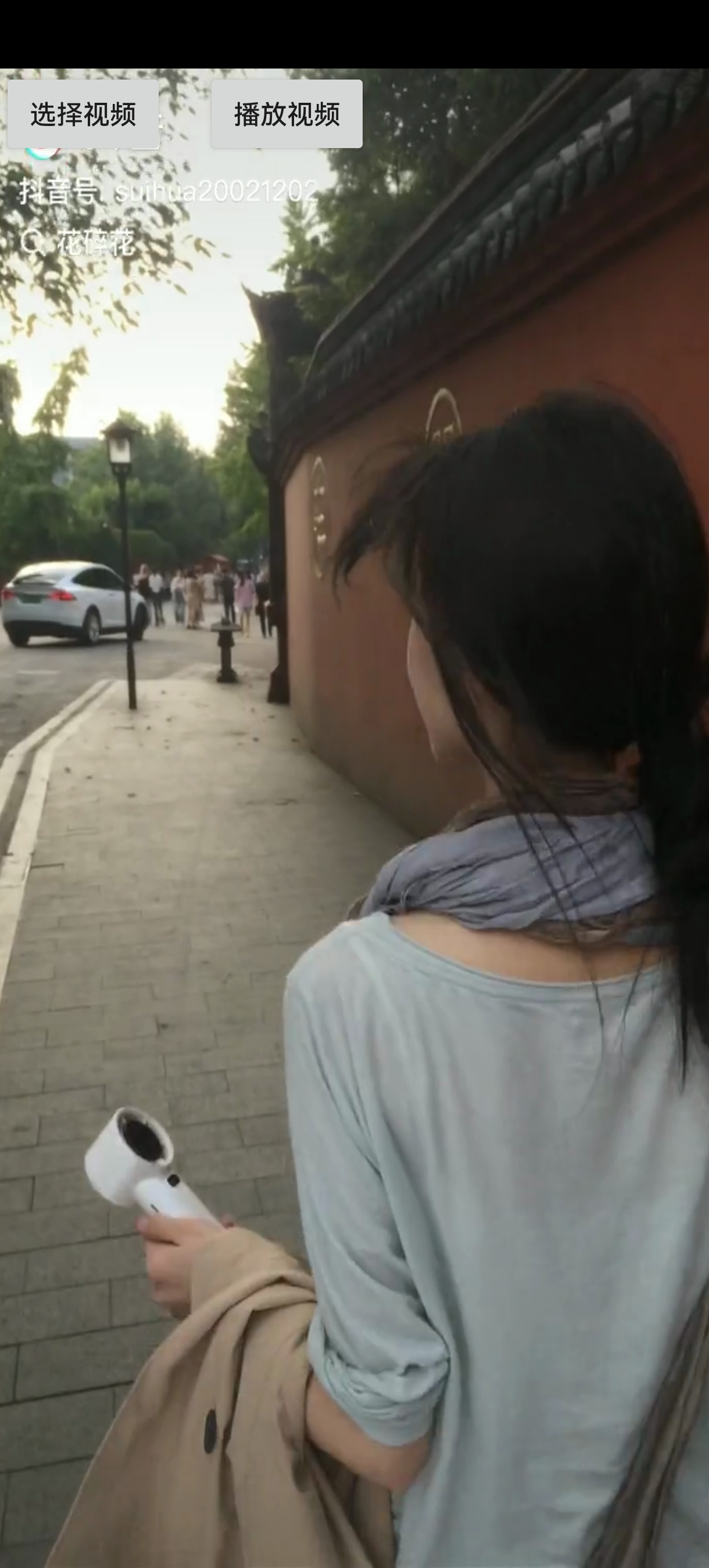SurfaceView+ANativeWindow+ffmpeg播放视频并解决花屏问题
一、概述
在Android中使用SurfaceView+ANativeWindow+ffmpeg播放视频非常简单。主要关注一下步骤以及里面的坑就行
步骤:
-
- 创建一个Activity并写一个自定的View继承SurfaceView,并重写SurfaceHolder.Callback的onSurfaceCreated、onSurfaceChanged、onSurfaceDestroy
class YPlayView(context: Context?, attrs: AttributeSet?) : SurfaceView(context, attrs), Runnable, SurfaceHolder.Callback {
init { holder.addCallback(this) } override fun surfaceCreated(holder: SurfaceHolder) { Log.e(TAG, "surfaceCreated") mSurface = holder.surface Thread(this).start() } override fun surfaceChanged(holder: SurfaceHolder, format: Int, width: Int, height: Int) { Log.e(TAG, "surfaceChanged") } override fun surfaceDestroyed(holder: SurfaceHolder) { Log.e(TAG, "surfaceDestroyed") releaseANativeWindow() }
- 创建一个ANativeWindow
nwin = ANativeWindow_fromSurface(env, surface); if (nwin == NULL) { LOG_E("ANativeWindow 为 NULL"); return; } ANativeWindow_setBuffersGeometry(nwin, outWidth, outHeight, WINDOW_FORMAT_RGBA_8888);
- 准备数据,并显示。ps:此处准备数据是通过ffmpeg读取视频文件的AVFrame获取
void y_native_window_playback::RenderView() { ANativeWindow_setBuffersGeometry(nwin, outWidth, outHeight, WINDOW_FORMAT_RGBA_8888); //初始化像素格式转换的上下文 SwsContext *vctx = NULL; char *rgb = new char[outWidth * outHeight * 4]; AVPacket pkt; AVFrame *frame = av_frame_alloc(); while (isRunning) { LOG_E("开始执行渲染操作"); int d_result = demuxer.Read(&pkt); if (!decoder.Send(&pkt)) { av_packet_unref(&pkt); LOG_E("AVPacket送入解码器失败"); MSleep(10); continue; } while (decoder.Receive(frame)) { if (ANativeWindow_lock(nwin, &wbuf, 0) == 0) { if (outWidth != wbuf.stride) {//逻辑内存和物理内存不一致 outWidth = wbuf.stride; } vctx = sws_getCachedContext(vctx, frame->width, frame->height, (AVPixelFormat) frame->format, outWidth, outHeight, AV_PIX_FMT_RGBA, SWS_FAST_BILINEAR, 0, 0, 0 ); if (!vctx) { LOG_E("sws_getCachedContext failed!"); } else { uint8_t *data[AV_NUM_DATA_POINTERS] = {0}; data[0] = (uint8_t *) rgb; int lines[AV_NUM_DATA_POINTERS] = {0}; lines[0] = outWidth * 4; int h = sws_scale(vctx, (const uint8_t **) frame->data, frame->linesize, 0, frame->height, data, lines); if (h > 0) { uint8_t *dst = (uint8_t *) wbuf.bits; // 检查缓冲区是否有效 if (wbuf.bits == NULL) { ANativeWindow_unlockAndPost(nwin); return; } memcpy(dst, rgb, outWidth * outHeight * 4); ANativeWindow_unlockAndPost(nwin); } } } } } }
- 创建一个Activity并写一个自定的View继承SurfaceView,并重写SurfaceHolder.Callback的onSurfaceCreated、onSurfaceChanged、onSurfaceDestroy
二、里面的坑
坑1:通过ffmpeg将数据由YUV转为RGB再显示效率非常的慢,程序运行后打开视频,会发现即使不设置sleep时间。视频似乎也能正常播放(正常速度)。
以下这段代码效率不高,慎用。如果项目中对性能要求高就不要用。改用OpenGL ES直接渲染YUV数据,这个效率比较高。
uint8_t *data[AV_NUM_DATA_POINTERS] = {0};
data[0] = (uint8_t *) rgb;
int lines[AV_NUM_DATA_POINTERS] = {0};
lines[0] = outWidth * 4;
int h = sws_scale(vctx,
(const uint8_t **) frame->data,
frame->linesize, 0,
frame->height,
data, lines);
坑2:播放视频花屏。
现象:设定surface的宽高的时候,使用的是屏幕的宽高。但是ANativeWindow_Buffer wbuf;的wbuf.width!=wbuf.stride(步长)导致视频错乱花屏。
现象如下图:
异常图片

正常图片

解决办法:1.判断buffer缓冲区的宽度和步长是否一致,如果不一致就就把步长赋值给输出宽度。2.采用逐行copy的方法。此处采用的是第一种方案,效率更高些
if (ANativeWindow_lock(nwin, &wbuf, 0) == 0) { if (outWidth != wbuf.stride) {//逻辑内存和物理内存不一致 utWidth = wbuf.stride; } }




 浙公网安备 33010602011771号
浙公网安备 33010602011771号